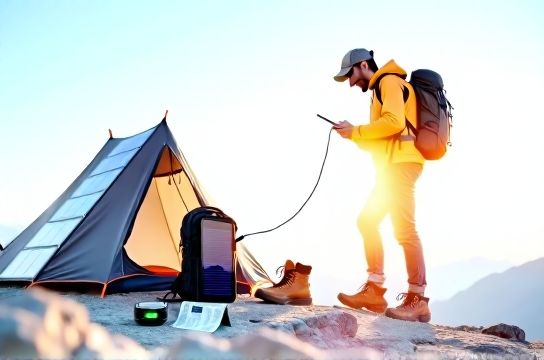Solar Powered Chargers for Off Grid Adventures
- 时间:
- 浏览:26
- 来源:OrientDeck
So you’re heading off the grid—no Wi-Fi, no power outlets, just pure nature. But let’s be real: your phone, GPS, or camera still needs juice. That’s where solar powered chargers shine (pun intended). These portable powerhouses turn sunlight into usable energy, keeping your devices alive when civilization’s off the map.

Why Go Solar?
Traditional battery packs die. Generators are loud and heavy. Solar? It’s renewable, silent, and gets better every year. Modern solar chargers use high-efficiency monocrystalline panels, folding designs, and USB-C PD outputs that can charge a smartphone in under two hours.
According to the Outdoor Industry Association, over 40% of Americans participate in outdoor recreation yearly. And with more people hiking, camping, and van-lifing, demand for reliable off-grid power has skyrocketed. Solar chargers have responded with smarter tech and lighter builds.
Top Features to Look For
- Wattage: 10W–25W is ideal for charging phones and small gadgets.
- Battery Capacity: Built-in power banks (5,000–20,000mAh) store energy for cloudy days.
- Durability: Water-resistant and rugged materials survive rain and drops.
- Portability: Foldable panels weigh under 1.5 lbs and pack small.
Best Solar Chargers Compared
| Model | Wattage | h>Battery (mAh) | Weight | Price |
|---|---|---|---|---|
| Anker PowerPort Solar 2 | 21W | 0 | 1.3 lbs | $89 |
| Goal Zero Nomad 20 | 20W | 0 | 1.6 lbs | $129 |
| BigBlue 28W 3-Port | 28W | 0 | 1.8 lbs | $69 |
| X-Dragon Solar Charger | 24W | 20,000 | 2.1 lbs | $79 |
This table shows a clear trade-off: models with built-in batteries are heavier but offer storage. If you’re backpacking light, go for panel-only options like Anker or BigBlue. For basecamp setups, X-Dragon’s all-in-one design makes sense.
Real-World Charging Tips
- Angle Matters: Tilt the panel toward the sun. A 90° angle maximizes absorption.
- Avoid Shade: Even partial shade cuts output by 50% or more.
- Use in Morning or Midday: Peak efficiency happens between 10 AM and 2 PM.
- Pair with a Power Bank: Charge the bank during the day, then use it to power devices at night.
The Bottom Line
Solar powered chargers aren’t sci-fi anymore—they’re essential gear. Whether you're thru-hiking the Appalachian Trail or living the van life, having a reliable way to recharge means staying connected when it counts. Just remember: higher wattage + smart usage = fewer dead devices and more peace of mind.
So next time you pack your tent, don’t forget your solar charger. The sun’s always working—your gear should too.